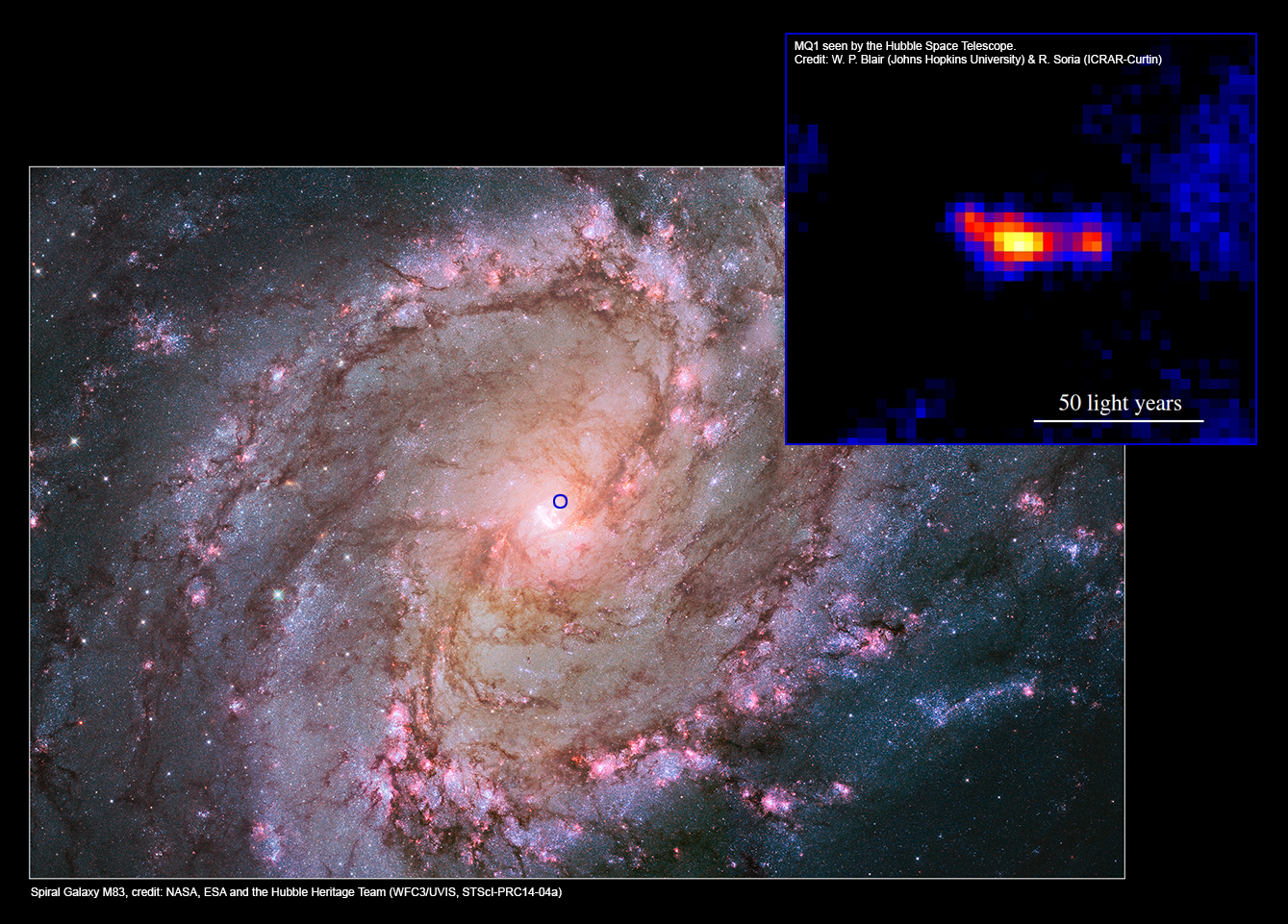Daily Image
25-03-2014Discovery of a Super-Powered Black Hole in the Nearby Galaxy M83
| Submitter: | Leith Godfrey |
| Description: | In an article featured on the cover of the journal Science this week, a team of astronomers led by Dr. Roberto Soria at Curtin University, and including ASTRON research fellow Dr. Leith Godfrey, presented the exciting discovery of a microquasar that has been blasting out extremely powerful jets, well above the so called "Eddington limit", for over 10,000 years. The powerful microquasar, called MQ1, was discovered in the inner disk of the spiral galaxy M83 (the "Southern Pinwheel"), as part of a multi-wavelength study of the X-ray source populations in this galaxy. The multi-wavelength campaign involves data from the Chandra X-ray observatory, Hubble Space Telescope, the Australia Telescope Compact Array, and the Australian Long Baseline Array. The fortuitous state of the newly discovered microquasar provided a unique opportunity to robustly determine both the black hole mass and the time-averaged mechanical power (mechanical power refers to energy released in the form of jets and winds). Analysis of the X-ray emission properties of the accretion disk indicated that the compact object is a typical stellar mass black hole of order 10 solar masses (although possibly as high as 100 solar masses). Optical emission lines from shocked gas surrounding MQ1 enabled a measurement of the time-averaged mechanical power, which was found to be as much as 20 times the Eddington luminosity of the black hole. Whilst it is well known that the radiative luminosity of the accretion flow onto a compact object cannot substantially exceed the Eddington limit, that is, the limit at which the outgoing radiation pressure impedes the inflow of matter, it remained unclear whether the mechanical power is bounded by this same limit. The discovery of MQ1 has demonstrated that mechanical power exceeding the Eddington limit is indeed possible over a sustained period. This result has strong implications for understanding accretion physics, and the physics of mechanical power output from black holes, at very high mass accretion rates. The above image shows the Hubble Space Telescope view of the spiral galaxy M83, and the microquasar MQ1 (inset). The blue circle marks the position of the microquasar MQ1 in the inner disk of the galaxy. You can read the full article here http://www.sciencemag.org/content/343/6177/1330.full and a perspective piece "Testing the Limits of Accretion" here http://www.sciencemag.org/content/343/6177/1318.full. |
| Copyright: | Leith Godfrey - ASTRON. Image Credits: M83 - NASA, ESA and the Hubble Heritage Team (WFC3/UVIS, STScI-PRC14-04a). MQ1 inset - W. P. Blair (Johns Hopkins University) & R. Soria (ICRAR-Curtin). |
| Tweet |  |
